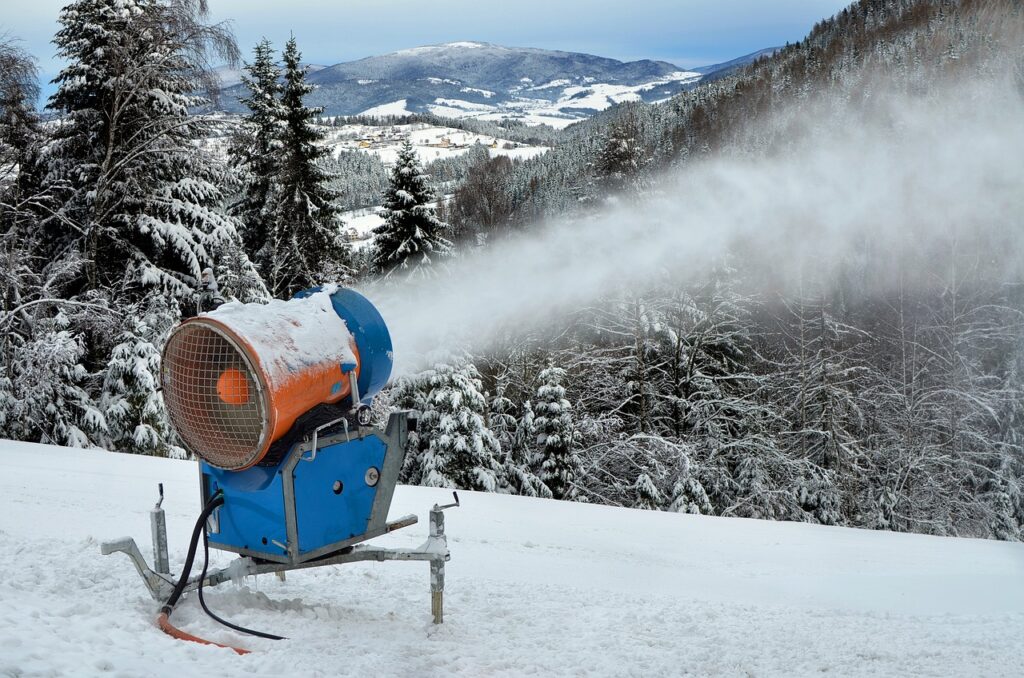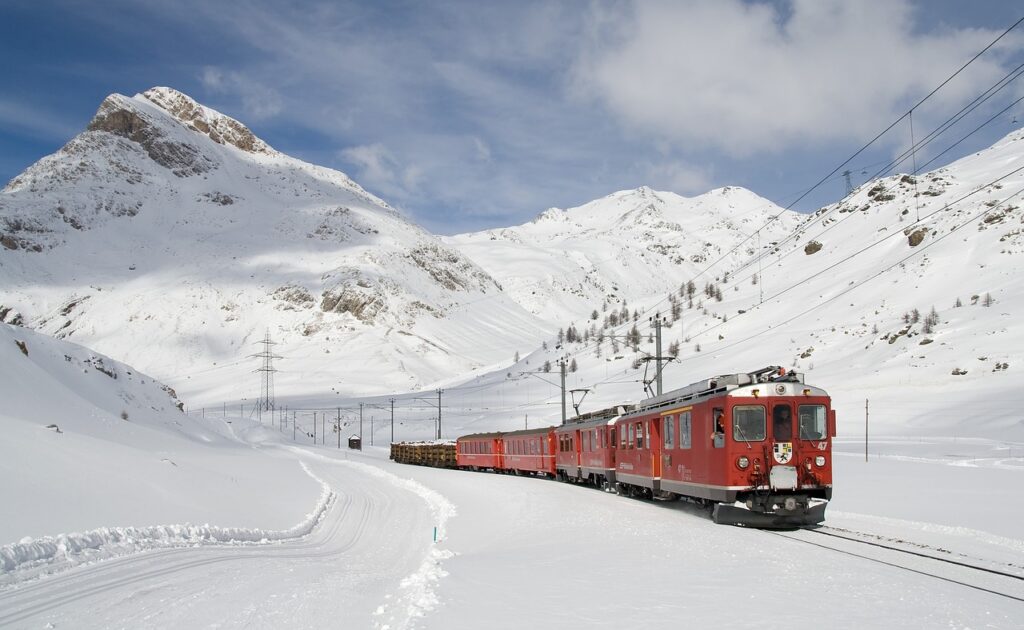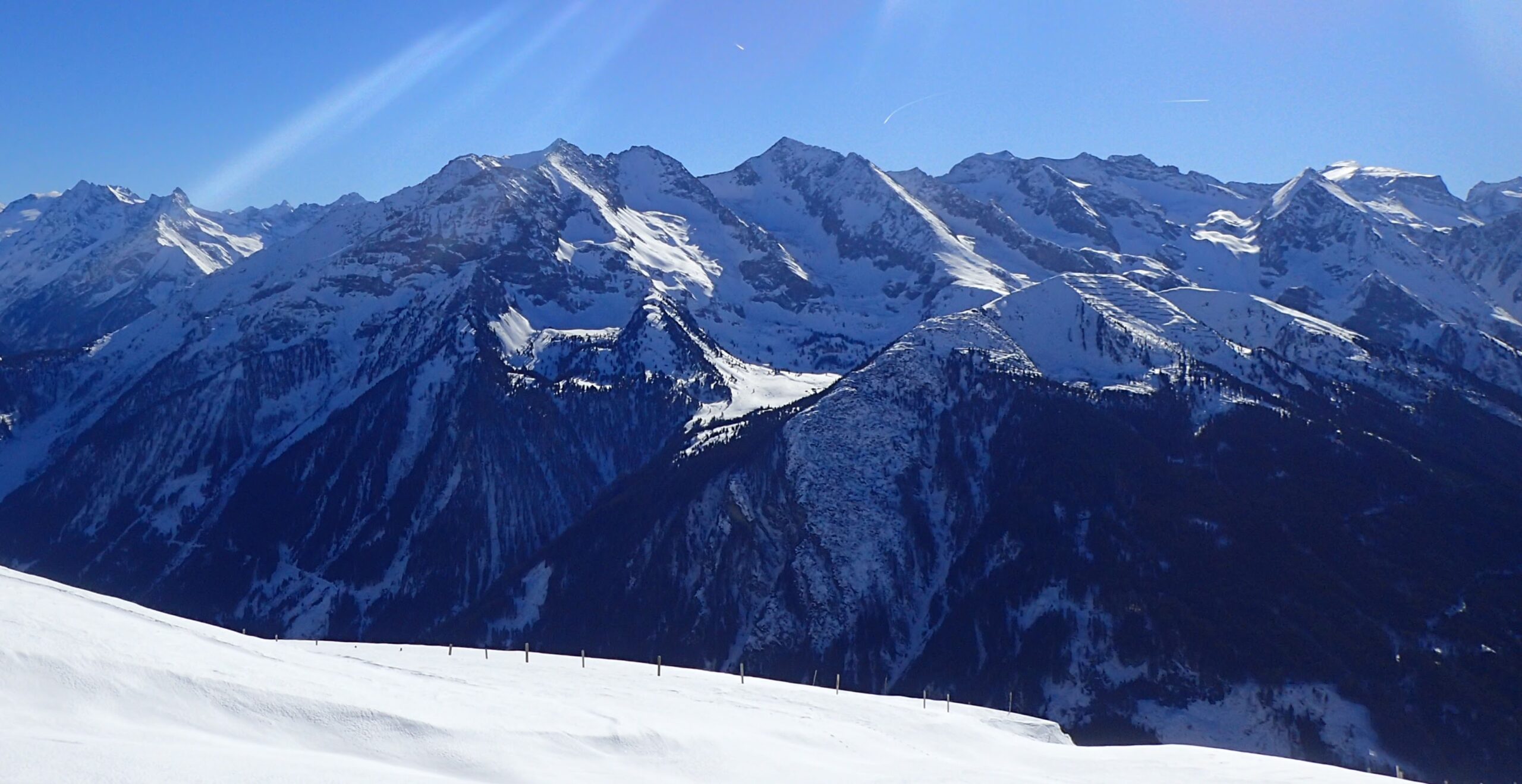There are many issues related to global warming around the world, and mountain ranges are not immune. In the Alps, global warming is happening at a faster rate than the global average. Climate change isn’t the only environmental problem, but it is one of the most serious threats to the ski industry.
Global warming is a threat to what people need from a ski resort. Tourists want reliable, long ski seasons with great quality snow throughout. Lower altitude resorts are already at a disadvantage because they are not as cold, and in some, 80% of their snow is artificial because there is a lack of snowfall due to the high temperatures. In fact, according to the Copernicus climate change service, Winter 2020 was 3.4˚ C above the average temperatures recorded from 1981 – 2010 and is currently the warmest on record. If global temperatures increase more, the effects in the mountains will worsen, and weather events will become more unpredictable, making the future of skiing uncertain.
For there to be enough snow cover on the pistes to enable resorts to be open, snow cannons are regularly used to create artificial snow to keep slopes skiable. Artificial snow is not as good as natural snow to ski on, but there are many more issues.

Snow cannons are expensive to run through the energy and water requirements along with all the maintenance. For example, in Zermatt, Switzerland, since 2002, over £100 million has been spent on snow making machines. This is the equivalent of a quarter of the total resort expenses. If the reliance on snow machines continues, then less people will be able to afford to go skiing because the cost will increase.
A large amount of water is needed to make the snow, this needs to be sourced and transported, which requires energy. It also removes water from areas where it is actually needed. 900,000 litres of water are required to create a layer of snow a foot deep over the area of an acre.
Lots of energy is required at all points of the process of making artificial snow. There is the energy needed to gather the water which is then transported in part by lorries along with pumps to get it to the snow cannons. Most lorries run on diesel which is a fossil fuel, so they pollute the environment, although it is worth mentioning that there are some lorries that now run using greener technology (e.g. hybrids), however these are exceedingly rare, and are unlikely to be used for transporting water. Energy is also used to generate the snow, and this would be in the form of electricity. While there are many schemes worldwide to make energy production renewable, most electricity is still produced by burning fossil fuels, which contributes to global warming.
Snow cannons also don’t last forever, so at some point they will need to be replaced, and while some of the materials may be recycled, some of the materials will just go to landfill when the snow cannons are decommissioned.
Over time, snow cannons may well become obsolete because they require cold weather to work, and given that the temperatures are rising, it may become too hot for them to produce snow. This could also lead to many ski resorts closing through a lack of snow, this wouldn’t just be bad for skiers and snowboarders, but it will be a disaster for many mountain regions whose local companies rely solely on Winter tourism for income.

Travel to, from and within a resort also has an impact. Using the train to travel to a resort is the cleanest way by far to get there, and this represents a 90% overall reduction in carbon emissions. However, many tourists fly because it is the quickest and easiest way of travelling long distances. However, the majority of places have some form of public transport within the resort or between nearby resorts, generally in the form of a bus. Using public transport does reduce the overall amount of emissions, and many buses are being converted to run on more environmentally friendly sources of energy. People are encouraged to use these facilities because of the frequency, efficiency and low cost of the services. Most resort buses are included in the local lift pass.
There are big variations in how eco-friendly ski resorts are, some have policies that make sustainability a priority whereas others are not at all eco-friendly and have few or questionable environmental policies.
The Beijing Olympics is a good example of questionable environmental management. To start with, it was the first Winter Olympics to use 100% artificial snow. This really wasn’t necessary because China already had several established ski resorts, so there wasn’t really any need to build a new venue, which is what they did. The location built on was a water-scarce zone, so with water in short supply they had to transport it in. A huge amount of water was needed, with 222 million litres of water used, which is the equivalent of around 85 Olympic sized swimming pools. China promised that the energy used would be 100% renewable, however that is also questionable considering the games used 100% artificial snow.

On the other hand, Zermatt in Switzerland has implemented many restrictions to help the environment. It’s a car-free resort, which restricts polluting transport options. The only way to get to the resort is by train, and the public transport system is a bus network which uses electric buses. Snow groomers use eco-diesel, which produces 11% less carbon monoxide than normal diesel. Also, one of the gondola stations is run solely on solar power, which uses a photovoltaics system. Zermatt doesn’t just have policies to reduce greenhouse gases, there are also other initiatives that help the environment in different ways. The forests are protected, and there is a wildlife sanctuary. Plastic waste is also repurposed to be used on roads, and old ski cable is reused in Myanmar to build bridges.
So, in summary, although the skiing industry has many negative environmental impacts, there are ways in which they could be significantly reduced. Many ski resorts are now becoming environmentally aware and working hard toward becoming more eco-friendly, others unfortunately are completely focused on attracting as many skiers as possible without taking time to consider the climate change implications.
Last updated by Isabelle on 27/03/2023

